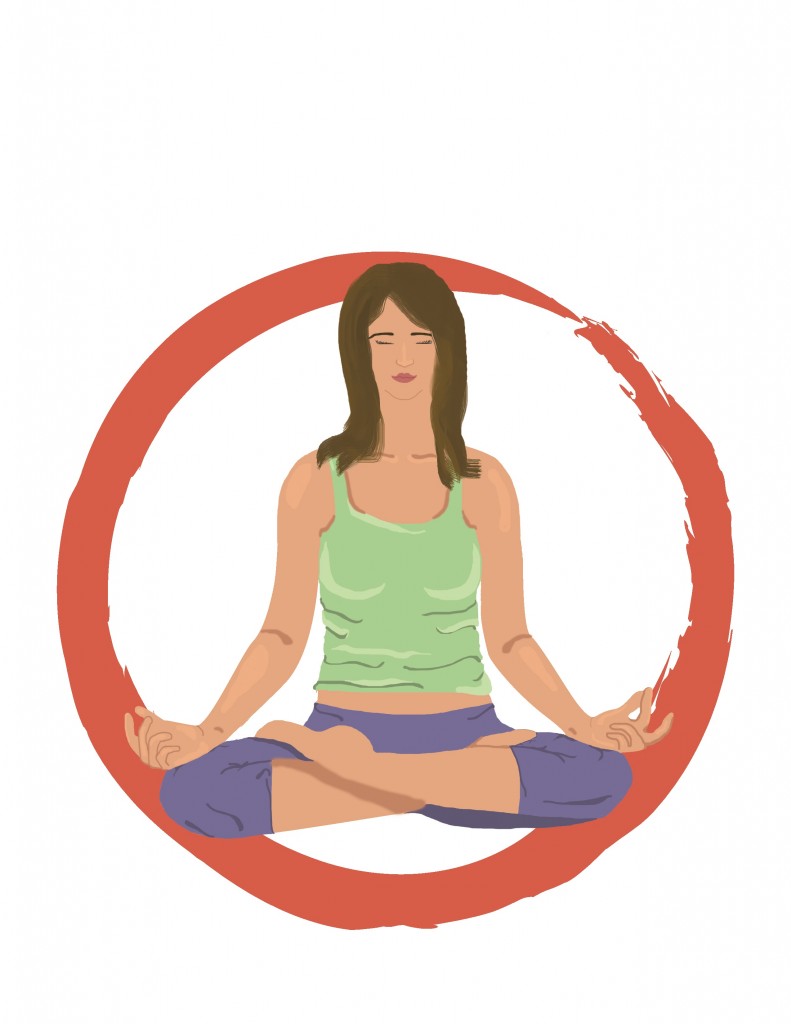A day in the life of a college student is full of stress, stress and more stress. What better way to de-stress and clear one’s mind than to take part in Mason’s mindfulness meditation classes?
Every Friday at 12:30 p.m. students from all majors, class standings and backgrounds meet for a little less than an hour to meditate. It’s a time to silence the mind and focus one’s thinking on the present moment.
Sessions take place in Student Union Building 1 Room 3011 and are taught by Michael Galvin, director of technology integration and university life services for the Loudon Instructional Site.
Galvin came to Mason almost a decade ago and fell in love with the community. He saw it as a growing institution with a lot of potential. Galvin not only worked for University Life, but he also completed his master’s and doctoral degrees at Mason. His PhD studies focused on college student wellbeing and resilience.
The idea to create a meditation group was presented to him by colleagues, who thought Galvin should take advantage of his access to Mason’s rooms granted through his job with University Life. At the time, Mason had already declared itself as a well-being university, meaning that it values the physical and psychological care of its students.
“At a well-being university, everybody becomes a teacher,” Galvin said. “We learn how to be mindful of one another and to embrace the differences that we have when we are focused in the present moment.”
Galvin believes that a big part of our well-being is our psychology, and that “developing a mindful perspective, a mindful world view” can help us navigate the murky waters of early adulthood.
Galvin understands students’ stress all too well since his position at University Life involves performance-based expectations, similar to students’ grades. He says that because mindfulness techniques can help improve concentration, they are especially beneficial for students.
“Mindfulness meditation allows you to actually read more than two pages of a textbook without forgetting where you are,” Galvin explained.
One way improved concentration is accomplished is through focused breathing. Concentrating on how you are breathing in and out brings your mind mind to the present moment. It helps to quiet your ever-present inner dialogue and concentrate on what’s going on in the here and now.
Junior Sydney Iwanski, who has been practicing meditation for about a year, says that mindfulness meditation in particular helps her be more aware of her “surroundings” and how she is “feeling at a given moment.”
Other students report a sense of increased awareness of their inner dialogue after only a few weeks of mindfulness meditation practice. This allows them to be more aware of when they are thinking negatively or are being distracted by something.
Galvin says he practices meditation five to six times a week, with a brief mindfulness practice every night.
“The hardest thing about mindfulness meditation is our expectations of ourselves,” he said. “Mindful meditation is not about finding the absolute serenity or quiet that we expect ourselves to reach. Instead it’s about the practice itself and working to quite your mind without the expectation that it will be silent on its own. That is what makes it a practice and not a luxury.”
Galvin explains that because mindfulness takes work, it is important not to judge yourself for the thoughts that do come up, but instead to quietly tell yourself to come back to focusing on your breath.
According to Galvin, most beginners find there is a conversation going on in their head that they’re not proud of, and some find they have unhealthy ideas in their mind that they keep stuffed away.
“While practicing mindfulness you can’t hide that from yourself,” he said.
However, Galvin adds that meditation can be a powerful tool for healing if you’re willing to work.
“[You] obtain the ability to change your world view forever in just a few moments of powerful rethinking about a situation,” he says. “Practice won’t make perfect, it just makes more practice. But it’s practice for daily life”




